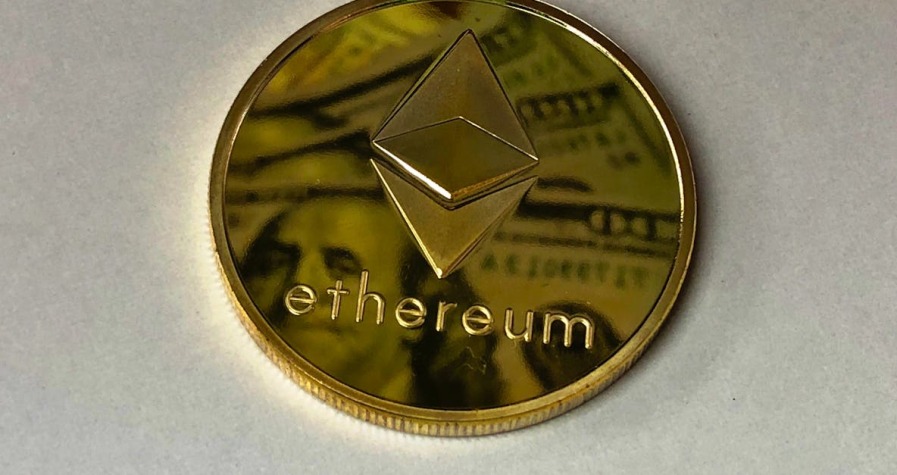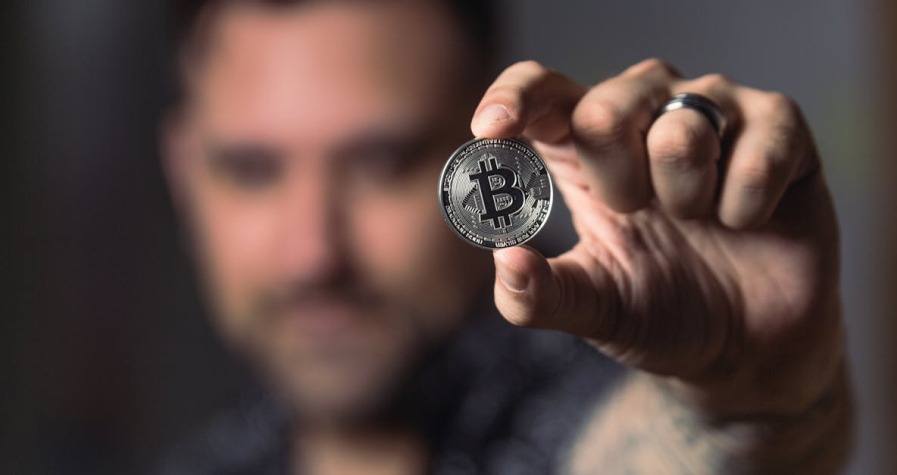You’ve just realised you’ve sent your cryptocurrency to the wrong wallet address, and panic is setting in. This nightmare scenario happens more often than you’d think, with thousands of crypto users accidentally sending funds to incorrect addresses every day. The irreversible nature of blockchain transactions makes this mistake particularly costly.
The good news? Whilst crypto recovery isn’t always possible, there are several methods you might try depending on your specific situation. Your chances of success largely depend on the type of wallet you’ve sent funds to, whether you control the receiving address, and how quickly you act.
Understanding your options is crucial before you write off your digital assets entirely. From contacting exchanges to exploring technical recovery methods, we’ll guide you through every potential solution to help you reclaim your cryptocurrency – if recovery is feasible in your case.
Understanding the Basics of Crypto Transactions
Crypto transactions operate fundamentally differently from traditional banking systems, making recovery attempts more complex. Your understanding of how blockchain networks process transactions determines which recovery options might work for your specific situation.
Why Crypto Transactions Are Irreversible
Cryptocurrency transactions become irreversible once miners confirm them on the blockchain network. You cannot reverse or cancel these transactions because no central authority controls the network like banks do with traditional payments.
Cryptographic signatures make each transaction mathematically unique and tamper-proof. Your private key creates a digital signature that proves ownership and authorises the transfer. Once you broadcast this signed transaction to the network, miners validate it through complex mathematical processes.
Network consensus ensures transaction permanence across thousands of nodes worldwide. Each node maintains an identical copy of the blockchain ledger, making it impossible to alter confirmed transactions without controlling the majority of the network’s computing power.
Smart contracts on networks like Ethereum add another layer of irreversibility. These self-executing contracts automatically process transactions when specific conditions are met, removing human intervention from the process entirely.
The Role of Blockchain Networks in Transaction Finality
Different blockchain networks achieve transaction finality through varying confirmation processes and timeframes. Your recovery window depends entirely on which network processed your misdirected transaction.
| Network | Confirmation Time | Finality Method | Recovery Window |
|---|---|---|---|
| Bitcoin | 10-60 minutes | Proof of Work | Before first confirmation |
| Ethereum | 1-5 minutes | Proof of Stake | Before block inclusion |
| Litecoin | 2.5-15 minutes | Proof of Work | Before first confirmation |
| Solana | 1-2 seconds | Proof of History | Extremely limited |
Bitcoin’s proof-of-work system requires miners to solve complex mathematical puzzles before adding transaction blocks. You typically have 10 minutes between broadcasting and first confirmation to potentially recover funds through network manipulation.
Ethereum’s proof-of-stake mechanism finalises transactions much faster since validators stake their own cryptocurrency to propose new blocks. Your transaction becomes irreversible within 1-2 block confirmations on most exchanges.
Layer-2 solutions like Lightning Network or Polygon process transactions off the main blockchain before settling them in batches. These systems offer slightly more flexibility for recovery attempts if you catch the error before batch settlement occurs.
Cross-chain bridges create additional complexity when recovering misdirected funds between different blockchain networks. Your transaction might exist on multiple networks simultaneously, requiring recovery attempts on each relevant chain.
Common Scenarios for Sending Crypto to Wrong Wallets
Several distinct scenarios lead to cryptocurrency being sent to incorrect destinations. Understanding these patterns helps you identify the most effective recovery approach for your specific situation.
Wrong Network Transfers
Wrong network transfers occur when you send cryptocurrency to the correct address format but on an incompatible blockchain network. You might send Ethereum tokens to a Binance Smart Chain address or transfer Bitcoin to a Bitcoin Cash wallet address.
Your funds don’t appear lost permanently in most wrong network transfer cases. If your wallet supports multiple networks or your private key controls addresses on both the origin and destination networks, you can switch between networks within applications like MetaMask to locate your assets.
Recovery methods for network transfer errors include:
- Switching network settings within your existing wallet application
- Importing your private key into a wallet that supports the destination network
- Using cross-chain bridges to transfer tokens back to the correct blockchain
- Contacting the receiving platform’s support team if the destination is an exchange
MetaMask users commonly experience this issue when switching between Ethereum and Binance Smart Chain networks. Your recovery phrase grants access to the same wallet addresses across both networks, making fund recovery straightforward through network selection changes.
Incorrect Wallet Address Entry
Incorrect wallet address entry happens when you input a valid address format that belongs to someone else’s wallet rather than your intended recipient. This scenario creates the most challenging recovery situation since the transaction completes successfully on the blockchain.
Invalid address formats typically cause transaction failures before confirmation, protecting your funds automatically. However, valid addresses belonging to unknown recipients create irreversible transfers that depend entirely on the recipient’s willingness to return your cryptocurrency.
Address entry errors fall into these categories:
- Invalid format errors: Transaction rejection before blockchain confirmation
- Valid but wrong addresses: Successful transfers to unknown recipients
- Exchange internal mix-ups: Transfers within the same platform using incorrect account details
- Typographical mistakes: Single character changes creating valid but incorrect addresses
Recovery success rates vary dramatically based on whether you can identify and contact the receiving party. Known recipients like friends or business contacts may agree to return misdirected funds, whilst anonymous wallet holders have no obligation to respond to recovery requests.
Exchange Address Mix-ups
Exchange address mix-ups involve sending cryptocurrency to incorrect addresses within centralised trading platforms or between different exchange accounts. These scenarios often provide better recovery prospects compared to peer-to-peer transfer errors.
Exchange platforms maintain customer support systems designed to handle misdirected transfers between user accounts. Support teams can manually investigate and potentially reverse transfers when you provide sufficient transaction evidence and account verification.
Common exchange mix-up situations include:
- Sending funds to expired or incorrect deposit addresses
- Transferring between wrong user accounts on the same platform
- Using outdated deposit addresses after account changes
- Mixing up similar cryptocurrency ticker symbols during transfers
Recovery processes through exchanges typically require submitting detailed support tickets with transaction hashes, timestamps, and account verification documents. Processing times range from several days to weeks, and platforms may charge administrative fees for manual intervention services.
Binance, Coinbase, and other major exchanges maintain dedicated recovery departments for handling misdirected transfers. Success rates improve significantly when you act quickly and provide comprehensive transaction documentation to support representatives.
Immediate Steps to Take After Sending Crypto to Wrong Wallet
Time becomes your most valuable asset when you discover you’ve sent cryptocurrency to an incorrect destination. Taking swift action within the first few minutes can determine whether recovery remains possible.
Stop and Assess the Situation
Stop any further transactions immediately to prevent additional losses or complications. Your first priority involves halting all wallet activity and gathering your composure to approach the recovery process systematically.
Document the transaction details while they’re fresh in your memory. Record the exact amount sent, the cryptocurrency type, and the specific time you initiated the transfer. This information forms the foundation for any recovery attempts you’ll pursue.
Avoid panic-driven decisions that might worsen your situation. Many users compound their losses by attempting hasty recovery methods or sharing sensitive information with unverified parties claiming to help.
Gather Transaction Details
Collect the transaction ID (hash) from your wallet’s transaction history or email confirmation. This unique identifier serves as your primary reference point for tracking the funds across blockchain networks.
Record both the sending and receiving addresses in their complete formats. Copy these addresses directly from your transaction records rather than typing them manually to avoid transcription errors.
Note the blockchain network used for the transaction, as this determines which recovery methods you can attempt. Different networks like Ethereum, Binance Smart Chain, or Bitcoin require distinct recovery approaches.
Access a blockchain explorer specific to your network to verify the transaction status. Popular explorers include Etherscan for Ethereum, BscScan for Binance Smart Chain, and Blockchain.info for Bitcoin transactions.
Screenshot all relevant transaction information including timestamps, fees paid, and current confirmation status. These visual records prove invaluable when communicating with support teams or documenting your recovery attempts.
Check the Destination Wallet Status
Determine whether the destination address belongs to an exchange, personal wallet, or smart contract. Each category presents different recovery possibilities and requires specific approaches.
Verify if the receiving address supports multiple blockchain networks by checking it across different explorers. Multi-network wallets like MetaMask often share addresses across compatible chains, creating potential recovery opportunities.
Research the wallet provider or exchange associated with the destination address using online databases or community forums. Established platforms typically maintain customer support channels for handling misdirected transfers.
Check if you control the destination wallet through any of your existing accounts or backup phrases. Some users accidentally send funds between their own wallets across different networks without realising the connection.
Investigate whether the destination address has recent activity or appears dormant. Active addresses suggest a responsive owner who might cooperate with return requests, while dormant addresses may indicate lost or abandoned wallets.
Recovery Methods Based on Different Scenarios
Your recovery approach depends entirely on the specific circumstances of your misdirected transaction. Different scenarios require distinct strategies and offer varying success rates for fund retrieval.
Same Network, Wrong Address Recovery
Recovery possibilities are highest when you’ve sent cryptocurrency to an incorrect but valid address on the same blockchain network. Your success depends primarily on whether you can establish contact with the destination wallet’s owner.
Contact the recipient directly if you know them or can reach them through the platform where you obtained their address. Provide complete transaction details including the transaction hash, date, amount, and your wallet address to verify your claim. The recipient faces no legal obligation to return your funds, making polite and professional communication essential.
Import your private key or seed phrase into the correct wallet interface if the destination address belongs to another one of your accounts. Many users accidentally send funds between their own wallets on different platforms or accounts, making this scenario relatively straightforward to resolve.
| Recovery Method | Success Rate | Required Information |
|---|---|---|
| Direct contact with recipient | Variable | Transaction hash, amount, date |
| Own wallet access | High | Private key or seed phrase |
| Exchange intervention | Low to moderate | Transaction proof, account verification |
Cross-Network Transfer Recovery
Cross-network transfers occur when you send tokens to an address on an incompatible blockchain network, such as sending ERC-20 tokens from Ethereum to a Binance Smart Chain address. Recovery becomes possible if both networks use the same private key structure.
Import your private key into the correct network’s wallet interface to access funds that appear lost. Most major networks including Ethereum, Binance Smart Chain, and Polygon use identical private key formats, enabling you to access the same address across multiple chains.
Adjust network parameters in multi-chain wallets like MetaMask or Trust Wallet to view your funds on the correct network. Add the appropriate network configuration including RPC URL, chain ID, and currency symbol to display your tokens properly.
Contact exchange support immediately if you’ve sent unsupported tokens to an exchange wallet. Major exchanges can attempt technical recovery for significant amounts (typically over £3,000) but charge substantial fees ranging from 10-50% of recovered funds.
Exchange-to-Exchange Transfer Issues
Exchange-to-exchange transfers present moderate recovery prospects compared to peer-to-peer transactions. Most major exchanges maintain customer support teams specifically trained to handle misdirected transfers.
Submit a support ticket immediately with complete transaction documentation including screenshots, transaction hashes, and account details from both platforms. Exchanges can often trace funds within their internal systems and reverse transfers that haven’t reached external blockchain addresses.
Provide transaction proofs through official exchange channels rather than social media or unofficial communications. Include your account verification details, the intended recipient’s information, and timestamps of the erroneous transaction.
Expect processing delays ranging from 3-14 business days for exchange interventions. Complex cases involving multiple platforms or suspicious wallet addresses require additional investigation and may need legal intervention through specialised blockchain forensic firms.
Recovery success drops significantly once funds reach external blockchain addresses or wallets flagged for suspicious activity. Law enforcement agencies and forensic specialists can trace transactions but require substantial evidence and typically handle cases involving significant amounts exceeding £10,000.
When Recovery Might Be Possible
Recovery becomes achievable when you’ve sent cryptocurrency through supported networks or to addresses with accessible private keys. Your success depends on the specific wallets involved and the speed of your response.
Contacting the Recipient Directly
Direct contact with the recipient offers your best chance for voluntary recovery if funds reached someone else’s valid address. You’ll need to provide comprehensive transaction details including the transaction hash, transfer date, exact amount, and token type to establish legitimacy.
Contact methods vary depending on the recipient type:
- Exchange addresses: Submit support tickets with transaction proof
- Known wallet addresses: Use blockchain explorers to identify associated platforms or social media profiles
- Public addresses: Search for contact information through cryptocurrency forums or community channels
- Business wallets: Reach out through official customer service channels
Recipients aren’t legally obligated to return misdirected funds, making your approach crucial for success. Professional communication with clear documentation increases your chances of voluntary return significantly.
Working with Exchanges and Service Providers
Exchange platforms often maintain recovery procedures for cross-network transfers and account-related mistakes. Major exchanges like Binance, Coinbase, and Kraken employ dedicated recovery teams that handle misdirected transactions daily.
Recovery success rates vary significantly by exchange:
| Exchange Type | Recovery Success Rate | Typical Timeframe | Associated Fees |
|---|---|---|---|
| Major centralised | 70-85% | 2-8 weeks | 10-25% of amount |
| Smaller platforms | 40-60% | 4-12 weeks | 15-30% of amount |
| Decentralised | 5-15% | Variable | Network fees only |
Blockchain.com attempts recovery on unsupported token deposits exceeding $3,000 but charges a 10% fee with recovery periods extending several months. Your submission must include transaction hashes, wallet addresses, transfer amounts, and timestamps for processing.
Contact exchange support immediately after discovering the error. Many platforms impose strict timeframes for recovery requests, typically 30-90 days from the transaction date.
Using Professional Recovery Services
Specialised cryptocurrency recovery firms employ blockchain forensic analysis and legal frameworks to trace misdirected funds. These companies utilise advanced tracking software, behavioural analytics, and regulatory connections to maximise recovery potential.
Professional services excel in complex scenarios involving:
- Multi-hop transactions: Funds that moved through multiple addresses or exchanges
- Cross-chain complications: Transfers involving bridges or wrapped tokens
- Large amounts: Cases justifying substantial investigation costs
- Criminal activity: Situations requiring law enforcement coordination
Recovery firms charge between 15-40% of recovered amounts, with some requiring upfront consultation fees. Success rates depend heavily on transaction complexity, time elapsed since the error, and whether funds passed through regulated exchanges with Know Your Customer (KYC) policies.
These services prove most effective when you act within 72 hours of the mistaken transfer. Delays reduce success chances as funds typically move to cold storage or privacy-focused protocols, making tracking significantly more difficult.
When Recovery Is Impossible
Certain cryptocurrency transactions become permanently irretrievable despite all recovery efforts. Understanding these scenarios helps you recognise when pursuing recovery becomes futile and accept the loss.
Permanently Lost Transactions
You face permanent loss when private keys or seed phrases disappear completely from your possession. Billions of pounds worth of Bitcoin remain inaccessible due to forgotten passwords, misplaced hardware wallets or deleted key files. These funds exist on the blockchain but cannot be accessed by anyone, creating a permanent reduction in circulating cryptocurrency supply.
Invalid or nonexistent wallet addresses create another category of irreversible loss. When you send cryptocurrency to a malformed address, the transaction either fails to confirm or reaches an address with no corresponding private key. The blockchain’s decentralised structure prevents any authority from reversing these confirmed transactions, making recovery mathematically impossible.
Cross-network errors compound the difficulty of recovery attempts. Sending Ethereum tokens to a Bitcoin address format creates an incompatible transaction that cannot be reversed through technical means. The receiving network lacks the protocols to handle tokens from different blockchain architectures, resulting in permanent asset loss.
Understanding the Risks and Limitations
Cryptocurrency transactions operate without centralised support systems found in traditional banking. Banks can reverse unauthorised transactions or recover funds from closed accounts, but blockchain networks lack this intervention capability. You cannot contact customer service to undo a blockchain transaction once miners confirm it.
Recovery attempts involve significant financial costs and time investments with no guaranteed outcomes. Professional recovery services charge substantial fees, often requiring upfront payments before attempting recovery. Scammer proliferation in the recovery sector creates additional risks, with fraudulent services targeting desperate users who’ve lost cryptocurrency access.
Technical limitations restrict recovery options even when partial information remains available. Forgotten wallet passwords with missing backup phrases create computational challenges that exceed current technological capabilities. Brute force attacks on modern encryption require centuries of processing time, making recovery economically unfeasible for individual users.
Prevention remains the only reliable protection against permanent cryptocurrency loss. Double-checking wallet addresses before confirming transactions eliminates most human error scenarios. Maintaining secure backups of private keys and seed phrases ensures continued access to your digital assets throughout various technical failures or device replacements.
Prevention Strategies for Future Transactions
Prevention remains your most effective defence against crypto losses from misdirected transactions. These verified strategies significantly reduce the risk of sending funds to incorrect destinations.
Double-Checking Addresses and Networks
Address verification prevents costly mistakes that lead to permanent fund loss. Copy the recipient’s address directly from their platform rather than typing manually, as cryptocurrency addresses contain complex alphanumeric strings that are prone to human error.
Cross-reference the first and last 4-6 characters of wallet addresses before confirming transactions. Many scammers create addresses with similar starting and ending characters to deceive users during quick verifications.
Network compatibility checks prevent cross-chain errors that complicate recovery efforts. Ethereum-based tokens (ERC-20) require Ethereum network selection, whilst Binance Smart Chain tokens (BEP-20) need BSC network configuration. Verify that your selected network matches the recipient’s wallet capabilities before proceeding.
Popular wallets display network warnings when address formats don’t match selected blockchains. MetaMask highlights incompatible network selections with red warning messages, whilst Trust Wallet shows confirmation prompts for cross-chain transactions.
Using Test Transactions
Small-value test transfers confirm address accuracy without risking large amounts. Send 1-5% of your intended transfer amount first, then proceed with the full transaction after successful delivery confirmation.
Transaction confirmation times vary across networks, affecting your verification timeline. Bitcoin test transactions require 10-60 minutes for confirmation, whilst Ethereum transfers complete within 2-15 minutes during normal network conditions.
| Network | Test Amount | Confirmation Time | Average Fee |
|---|---|---|---|
| Bitcoin | 0.0001 BTC | 10-60 minutes | £2-8 |
| Ethereum | 0.01 ETH | 2-15 minutes | £5-25 |
| BSC | 0.001 BNB | 3-5 minutes | £0.10-0.50 |
| Polygon | 0.1 MATIC | 2-5 minutes | £0.01-0.05 |
Document test transaction details including timestamps and confirmation numbers. These records help establish transaction patterns if recovery becomes necessary for larger transfers.
Implementing Security Best Practices
Trusted wallet interfaces reduce user error through built-in safety features. Hardware wallets like Ledger and Trezor require manual address verification on device screens, preventing clipboard malware attacks that substitute addresses.
Address book functionality eliminates repeated typing errors for frequent recipients. Most wallet applications allow you to save verified addresses with custom labels, reducing the risk of manual entry mistakes during future transactions.
Private key security prevents unauthorised access that could complicate recovery efforts. Store seed phrases offline using metal backup plates or secure paper storage, never sharing recovery information through digital channels or cloud storage services.
Regular software updates maintain wallet security and compatibility features. Updated wallet versions often include enhanced cross-chain warnings and improved address validation systems that prevent common transaction errors.
Multi-signature wallet configurations require multiple approvals for large transactions. These setups provide additional verification steps that catch addressing errors before funds become irreversible, particularly useful for business or high-value personal transfers.
Conclusion
Recovering cryptocurrency sent to the wrong wallet isn’t always straightforward but it’s not necessarily impossible. Your success largely depends on acting quickly and choosing the right recovery approach for your specific situation.
The most effective strategy remains prevention through careful verification of addresses and networks before sending any transactions. However if you find yourself facing a misdirected transfer remember that exchanges and professional recovery services can sometimes help retrieve your funds.
Understanding the irreversible nature of blockchain transactions helps set realistic expectations whilst knowing your options empowers you to make informed decisions about recovery attempts. Stay vigilant with future transactions and always prioritise security measures to protect your digital assets.
Frequently Asked Questions
Can I recover cryptocurrency sent to the wrong wallet address?
Recovery depends on several factors including the type of wallet, speed of action, and destination address validity. While blockchain transactions are irreversible once confirmed, recovery may be possible if funds reached an exchange, known service provider, or active wallet holder willing to cooperate. Success rates vary significantly based on circumstances.
How long do I have to attempt recovery after sending crypto to the wrong address?
Time is critical for crypto recovery attempts. You should act immediately upon discovering the error, ideally within minutes or hours. Once transactions receive network confirmations (typically 1-6 confirmations depending on the blockchain), recovery becomes increasingly difficult. Some recovery windows may extend to days if exchanges are involved.
What should I do immediately after realising I’ve sent crypto to the wrong address?
Stop all wallet activity immediately to prevent further losses. Document the transaction ID, destination address, amount, and timestamp while details are fresh. Check if the destination address belongs to an exchange or service provider. Verify the transaction status on a blockchain explorer and begin researching recovery options promptly.
Are cryptocurrency transactions truly irreversible?
Yes, confirmed cryptocurrency transactions are irreversible due to blockchain’s cryptographic nature and decentralised consensus mechanisms. Unlike traditional banking, there’s no central authority to reverse transactions. Once miners confirm a transaction and it’s recorded on the blockchain, it becomes a permanent part of the ledger that cannot be altered.
Which recovery scenarios have the highest success rates?
Exchange-to-exchange transfers have the highest recovery success rates, as customer support teams can potentially assist with internal corrections. Cross-network transfers (sending to correct address format but wrong blockchain) also offer good recovery prospects through network switching or importing private keys to the correct network interface.
When is cryptocurrency recovery impossible?
Recovery becomes impossible when funds are sent to invalid or non-existent addresses, resulting in permanent loss. Additionally, if private keys or seed phrases are lost, funds become permanently inaccessible. Cross-network errors creating incompatible transactions and transfers to flagged or sanctioned addresses also typically result in irreversible losses.
Should I use professional crypto recovery services?
Professional recovery services can be effective for complex scenarios and significant amounts, employing advanced tracking techniques and legal frameworks. However, be cautious of scams in this sector. Only consider reputable services with proven track records, transparent fee structures, and realistic success rate claims for your specific situation type.
How can I prevent sending crypto to wrong addresses in future?
Always double-check recipient addresses by copying directly from their platform and cross-referencing multiple characters. Verify network compatibility before sending. Use small test transactions first, especially for new recipients. Maintain secure private key backups and use trusted wallet interfaces with updated software for enhanced security.
What information do I need for recovery attempts?
Gather complete transaction documentation including transaction ID, source and destination addresses, amount sent, timestamp, and blockchain network used. If contacting exchanges or service providers, provide screenshots of transaction confirmations and any relevant communication. Detailed documentation significantly improves recovery chances through official support channels.
Can exchanges help recover misdirected cryptocurrency?
Major exchanges often have dedicated teams for handling misdirected transactions with varying success rates. They may charge recovery fees and require complete transaction documentation. Recovery prospects are better for transactions between known exchanges or when funds haven’t left their custody systems, but success isn’t guaranteed.









